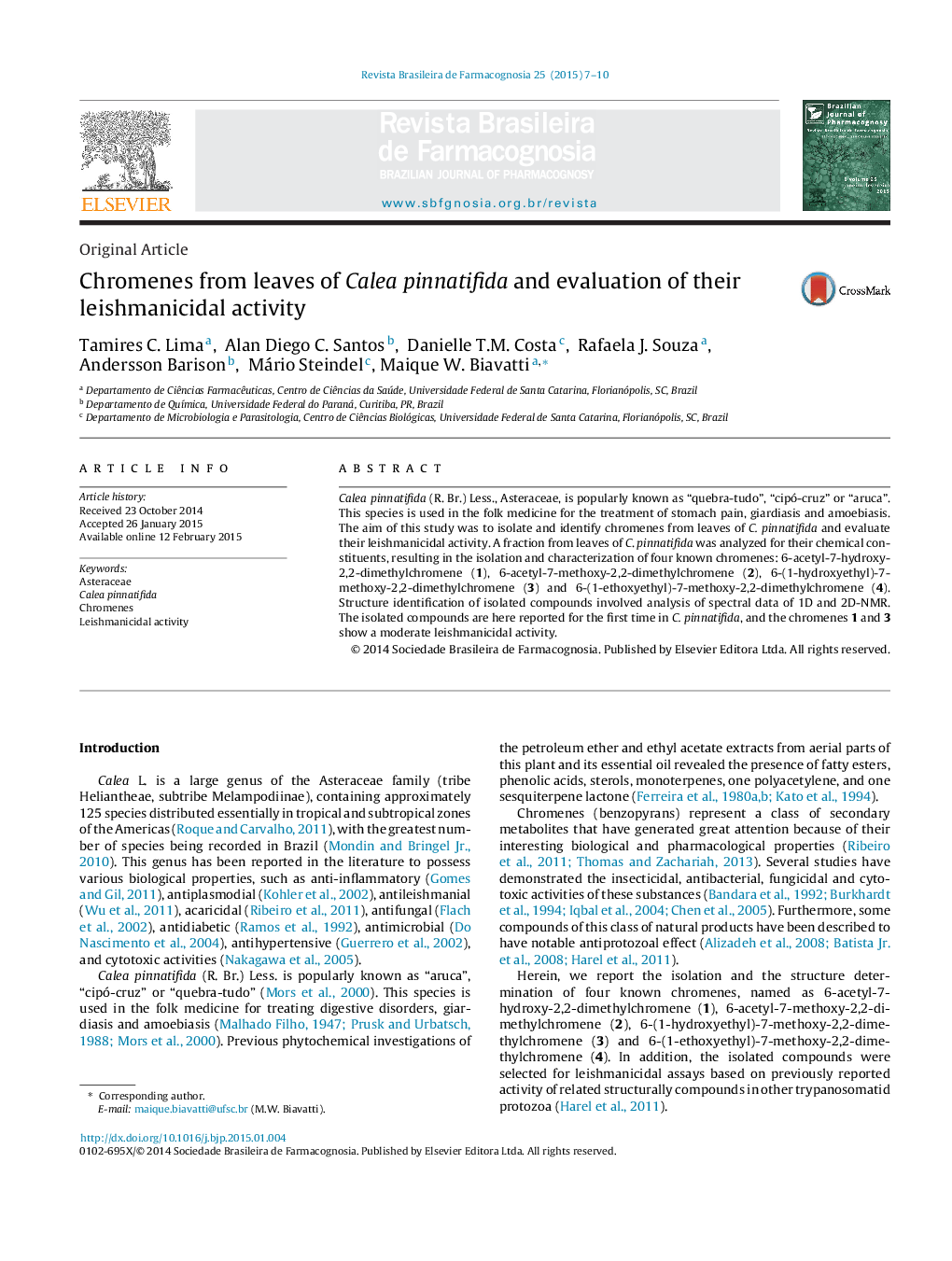| Article ID | Journal | Published Year | Pages | File Type |
|---|---|---|---|---|
| 2577710 | Revista Brasileira de Farmacognosia | 2015 | 4 Pages |
Calea pinnatifida (R. Br.) Less., Asteraceae, is popularly known as “quebra-tudo”, “cipó-cruz” or “aruca”. This species is used in the folk medicine for the treatment of stomach pain, giardiasis and amoebiasis. The aim of this study was to isolate and identify chromenes from leaves of C. pinnatifida and evaluate their leishmanicidal activity. A fraction from leaves of C. pinnatifida was analyzed for their chemical constituents, resulting in the isolation and characterization of four known chromenes: 6-acetyl-7-hydroxy-2,2-dimethylchromene (1), 6-acetyl-7-methoxy-2,2-dimethylchromene (2), 6-(1-hydroxyethyl)-7-methoxy-2,2-dimethylchromene (3) and 6-(1-ethoxyethyl)-7-methoxy-2,2-dimethylchromene (4). Structure identification of isolated compounds involved analysis of spectral data of 1D and 2D-NMR. The isolated compounds are here reported for the first time in C. pinnatifida, and the chromenes 1 and 3 show a moderate leishmanicidal activity.
Graphical abstractIsolation and characterization of the chromenes eupatoriochromene (1), methyl eupatoriochromene (2), encecalinol (3) and ethyl encecalol (4) from leaves of Calea pinnatifida.Figure optionsDownload full-size imageDownload as PowerPoint slide
